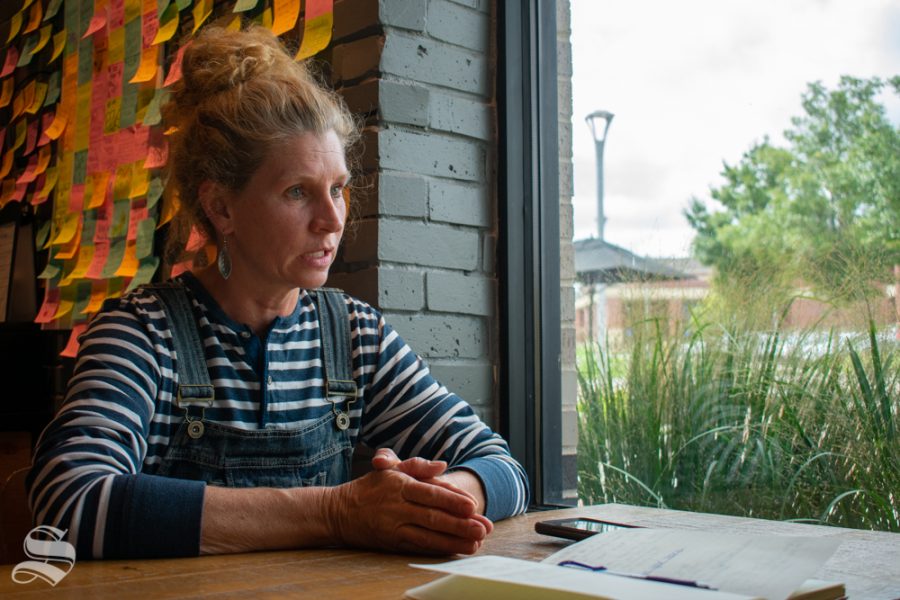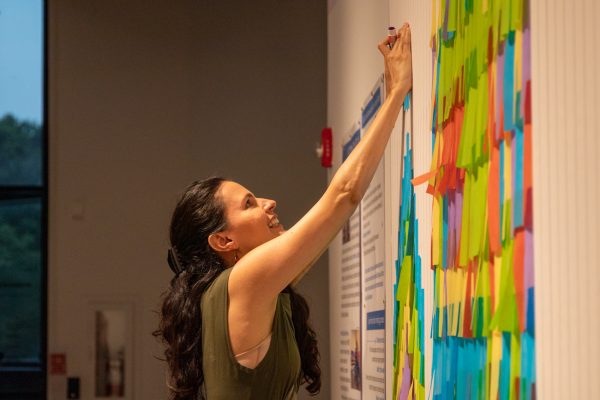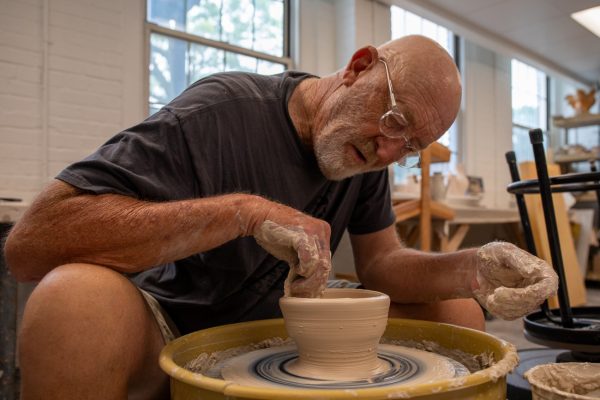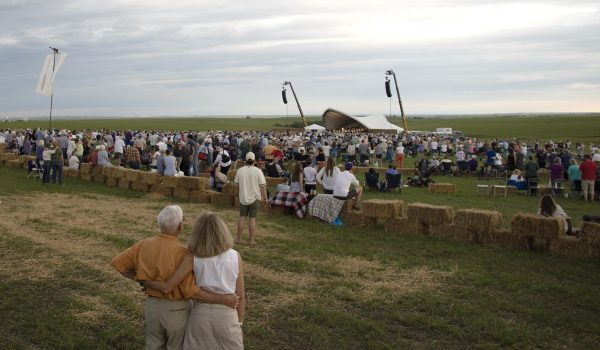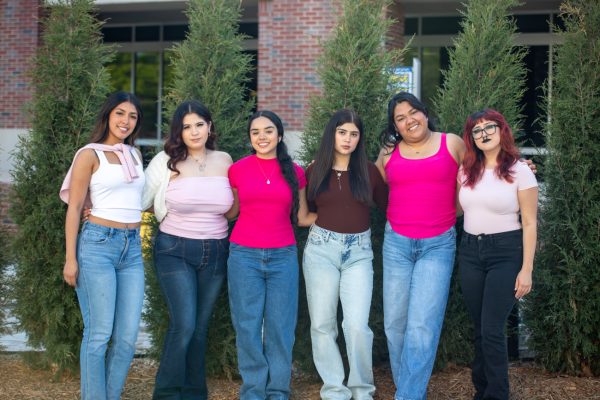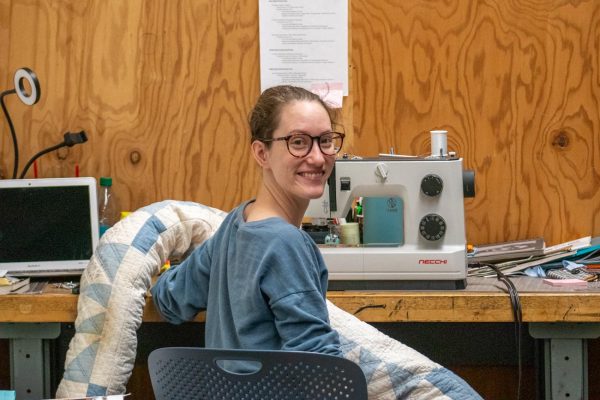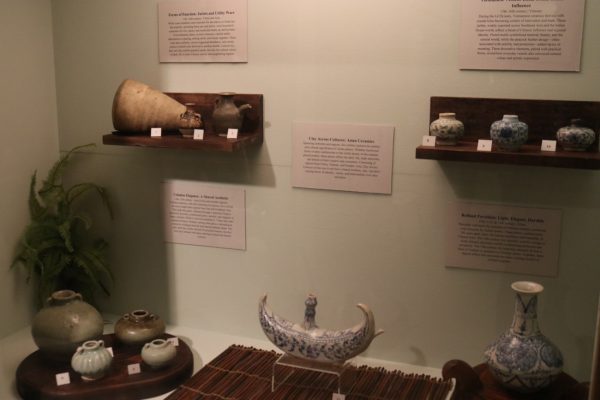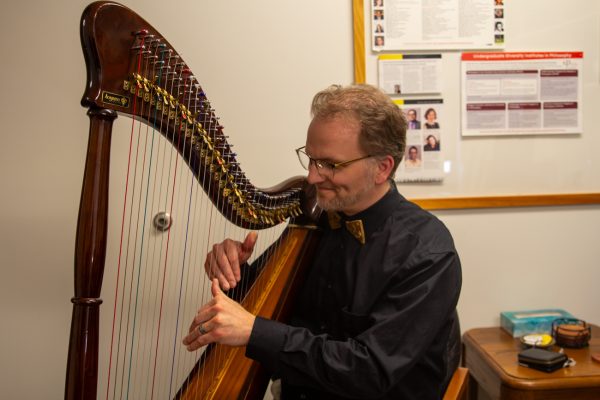ICT Food Rescue founder shares her story
Stephanie Merritt responds to a question about ICT Food Rescue during an interview with The Sunflower on Sept. 24 at the Starbucks in Braeburn Square. Merritt founded the non-profit organization which rescues leftover food from businesses and provides the food to those in need.
Stephanie Merritt is, in her own words, undefeatable.
As the founder of the ICT Food Rescue, an organization that rescues leftover food from local restaurants and gives it to the food insecure, Merritt said she has a passion for feeding the hungry.
The ICT Food Rescue was founded in 2016 and has grown since its inception. But a food rescue operation hasn’t always been in Merritt’s plans.
“Nowhere in my mind did I ever think that when I started college that that was where it was going to lead to . . . and now we’re part of a nationwide effort,” Merritt said.
Merritt has faced a number of trials in her life, but she’s braved them all.
“I found out I had breast cancer . . . After that, I got my feet out from under me . . . you know, you feel like when you overcome that, you can overcome the world,” Merritt said.
After she defeated breast cancer, Merritt decided she wanted to go back to college.
“I began taking classes that focused on food insecurity and food deserts . . . things like that,” Merritt said. “A lot of those courses gave me a passion to feed the hungry. I just decided that there was no sense to throw away food anymore. I couldn’t make it make sense in my mind.”
That’s when she had the idea for ICT Food Rescue — an organization that would rescue leftover food from restaurants, and use that food to feed people who need it. Merritt turned that idea into a reality.
“[Creating the ICT Food Rescue] just came through networking . . . through students that I was with . . . saying, ‘Hey, how do we do this? What do we do?,’” Merritt said. “They started networking and asking parents and friends.
“We just figured it out, and we started a nonprofit.”
In February 2016, the ICT Food Rescue gained 501(c)(3) status. After that, it was a journey to figure out exactly how the food rescue would get started. Before they made a name for themselves, Merritt took matters into her own hands.
“[ I chased] the young man at Reverie Coffee Roasters out to the trash dumpster because I knew he had food, so I was like, ‘Don’t throw that away, don’t throw that away,’” Merritt said.
“I let him throw the first bag away, and the second bag, I was like, ‘Let’s take it inside. Let’s talk to your manager.’”
The nonprofit now operates through a nationwide app called Food Rescue U.S., which Merritt uses to share food rescue information. Currently, the ICT Food Rescue has 257 food rescues scheduled through the app.
The organizations ICT Food Rescue rescues from include, but are not limited to, Picasso’s Pizza, Reverie Coffee Roasters, Mosley Street Melodrama, and Paradise Donuts. While bigger organizations also partner with ICT Food Rescue, Merritt said the local businesses are extremely important.
For anyone who wants to help the ICT Food Rescue’s mission, Merritt said the best way to do so is to download the Food Rescue U.S. app and volunteer to be a food rescuer.
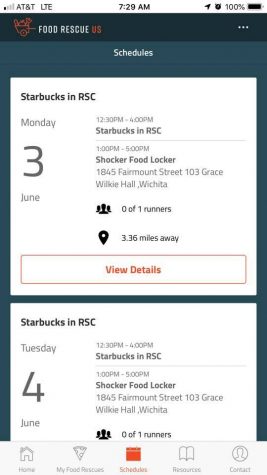
Screenshot of the ICT Food Rescue App
The app works by explaining where there is leftover food and what time it can be picked up, and then tells the rescuer where to deliver the food to. For example, the Starbucks in the Rhatigan Student Center will donate its leftover food to the Shocker Support Locker, located in Grace Wilkie. All the rescuer has to do is sign up and show up to the first location and drop it off at the second.
Food rescuers go into their work solo. While Merritt said it can be awkward the first time, it’s of great use for the organization.
“Just take the leap — just do a food rescue,” she said. “Even if you just do one, one out of 250 to me . . . is huge.”
For anyone who doesn’t have time to give to food rescuing, Merritt said the next best thing to do is have conversations about saving food.
“Maybe you’re in the grocery store and you see a whole bunch of food that’s getting ready to be thrown out,” she said.
“The person that you’re talking to at that grocery store, they have no say most likely . . . but somebody does. Just having that conversation, saying, ‘No, you don’t have to [throw it out].’”
“It’s better to have that conversation and then for it to go in the trash, and then maybe in three months, we’re rescuing from that organization.”

Lindsay Smith is the former editor-in-chief and newsletter editor for The Sunflower. Smith was a journalism major at Wichita State with a minor in creative...



